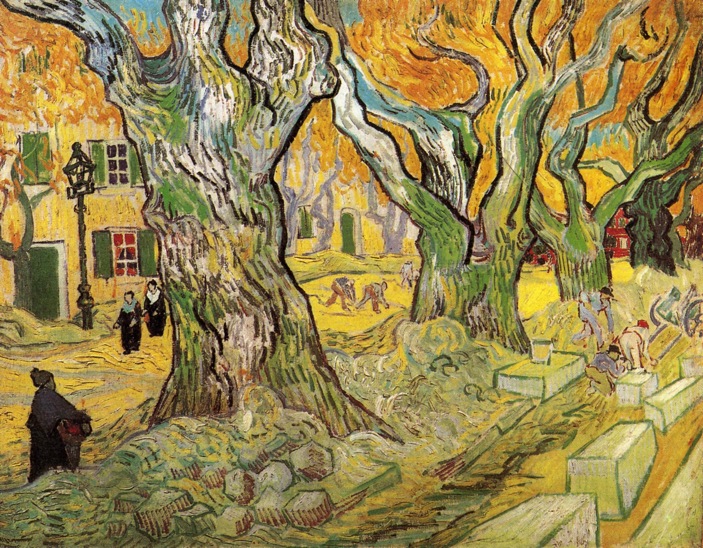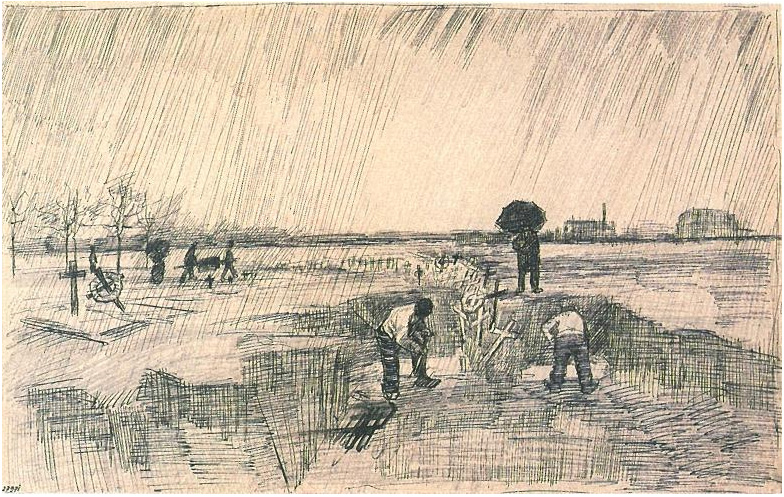I have recently been having conversations with friends and family regarding art, and what constitutes good art vs. bad art. (Pardon my simple labels. If you are looking for highly educated criticism, please, don't continue reading.) A co-worker related his experience at a local museum. He was intrigued to hear that our local museum had an exhibit of Andy Warhol paintings. He announced his intentions of going to view the exhibit. I did not comment. I thought I'd let him form his own opinions. When he returned to work, he told me that he was less than impressed. In fact, the words he used to describe Warhol's work are words I'd rather not use in my blog. Needless to say, he felt the seven dollars he spent on the viewing would have been better spent on two coffees at Starbucks.
I could have saved him the loss of cash. A Warhol fan I am not.
But many people are. And that's the magic/frustration of art. Anybody can like nearly any type of art. And I'm fine with that. If there are people who wish to ignore serious skill and beauty in art for the crass, mundane, or even the ugly, so be it. As far as we know, there are people in the world who actually enjoy eating bugs. As they say, there's no accounting for taste.
This sort of logic calms me when I realize that people would rather spend money on the latest Stephen King foolishness instead of a book by a more sensitive author like, say, yours truly. It is comforting to know this happens because some people just can't recognize real talent.
But I digress while attacking another artist in my field. (Which, by the way, is the number one pastime of just about every artist who ever lived. Seriously. I'm not joking.)
So let's look at what I consider to be good art. (Great Art sound better? Or maybe Exceptional?)
For this post on Good Art, I'm going straight to the top. No fooling around. Let's look at the master.
 |
| The Road Menders (Wikipedia image) |
Here you can see Vincent Van Gogh's "The Road Menders" (1889). Please take to the time to click on this image and enjoy the detail of this exquisite work. Gaugiun, who spent time painting beside Van Gogh, once remarked that Van Gogh's painting looked nothing like the scene they were both painting. Van Gogh's reply was along the lines that he was painting what the scene looked like to him. And that's what makes this so wonderful; the chubby trees, the golden swirl of the sun. There is so much to see in this moment that he has captured; the women passing by, the men working, backs bent to their tasks. Doesn't matter that they are not fleshed out with detail. The real focus here is on the trees. They not only hold the center of the painting, they also seem to be holding up the top of it.
 |
| Churchyard in the Rain (1883) Image from The Van Gogh Gallery (www.vangoghgallery.com) |
 |
| Le Moulin de la Galette Terrace and Observation Deck at the Moulin de Blute-Fin, Montmartre 1886 (photo by Jason Reeser) |
If we are to believe the history, Van Gogh only ever sold one painting in his life. That did not stop him from producing over two thousand pieces in a ten year span. It, however, keep him from earning enough money to promote politicians on his day-time television show. So maybe his obscurity was a good thing.
But it was, really. Do we really believe he could have kept up this pace if he had been a public sensation? Probably not.
 At this point let me add that if you are interested in Van Gogh, there is a book that you must read. I mean it. It may just be the best book I've ever read on art. The book is called The Yellow House: Van Gogh, Gauguin, and Nine Turbulent Weeks in Arles. It details the time when Van Gogh and Gauguin spent time together. It is a great chance to learn about both artists as well as learn about what makes an artist, and you might learn what art means to you in the process.
At this point let me add that if you are interested in Van Gogh, there is a book that you must read. I mean it. It may just be the best book I've ever read on art. The book is called The Yellow House: Van Gogh, Gauguin, and Nine Turbulent Weeks in Arles. It details the time when Van Gogh and Gauguin spent time together. It is a great chance to learn about both artists as well as learn about what makes an artist, and you might learn what art means to you in the process. What do you consider to be great art? I will come back to this subject again, and add to my examples. It won't all be paintings. It won't always be from famous artists. And it will always be my opinion. So add your own to this by leaving my your thoughts. Because art should always hit us on a personal level. If it doesn't, it may not be good art.

No comments:
Post a Comment